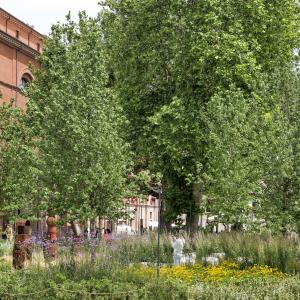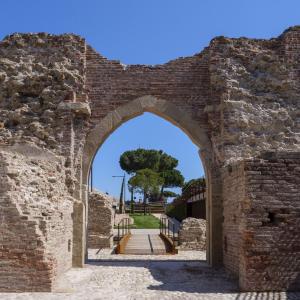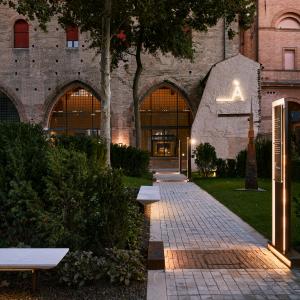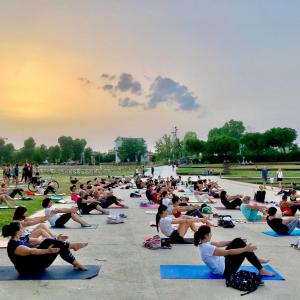Strolls through the lush gardens of art and history
Walking through Rimini you can enter lush gardens of art and history. New green spaces in the heart of the city that has been redeveloped following the trails of beauty and art.
Like the "Garden of the Sculptures of the Palazzi dell'arte Rimini" which is located behind the two important medieval palaces of the Arengo and the Podestà which house the museum of the contemporary art collection of the San Patrignano Foundation. A garden that is freely open to the public - during the opening hours of the PART Museum - and that can be experienced both as an authentic museum space and as a simple and lush Italian garden where you can simply cool off and relax. Designed starting from the ruins of ancient structures found in archaeological excavations, it proposes an Italian interpretation of a garden. The system favors the opening and closing of views; the geometric subdivision into rooms and spaces of various sizes, where the visitor can admire works by Alberto Garutti, Paul Kneale, Giuseppe Penone, Arnaldo Pomodoro, Kiki Smith, Piotr Uklanski and Chen Zhen: an example of how greenery can give new meaning to places, which, from simple public garden areas, can become spaces of art and culture.
Or like the "Woods of Names" in Piazza Malatesta, which is part of the Fellini Museum's outdoor project: a countryside triangle in the heart of the city that ideally unites Rimini to Valmarecchia and which is a tribute to Tonino Guerra and his essential contribution to Amarcord. In every season, the "Woods of Names" takes on different colors that give an ever new light to the stone flowers on which the names of great movie figures are engraved, including Federico Fellini and Giulietta Masina, and to the magic lanterns dedicated to the Russian writer Leo Tolstoy: artists and creators of beauty who inspire the passage of travelers. The greenery that has been chosen adds a story to the place, the arrangement of the maple trees with the historic plane tree, the spontaneous vegetation along the dirt paths and white paths gives the whole area poetry and movement.
Or like the square on the water overlooking the two-thousand-year-old Tiberius Bridge, which has become a meeting place and a place for physical activity, a space for events and shows in the green lung of the city. Or the green space of the reborn Galliana gate, the only medieval city gate, together with the Gattolo gate, still intact. Long buried for more than three meters above street level, it has now been given back its value and become usable, finally returned to the city. A new archaeological area accessible to all which is also proposed as a meeting point, connected to the cycle and pedestrian network, which is part of the trail of rediscovery and enhancement of the historical and cultural heritage of the city.



